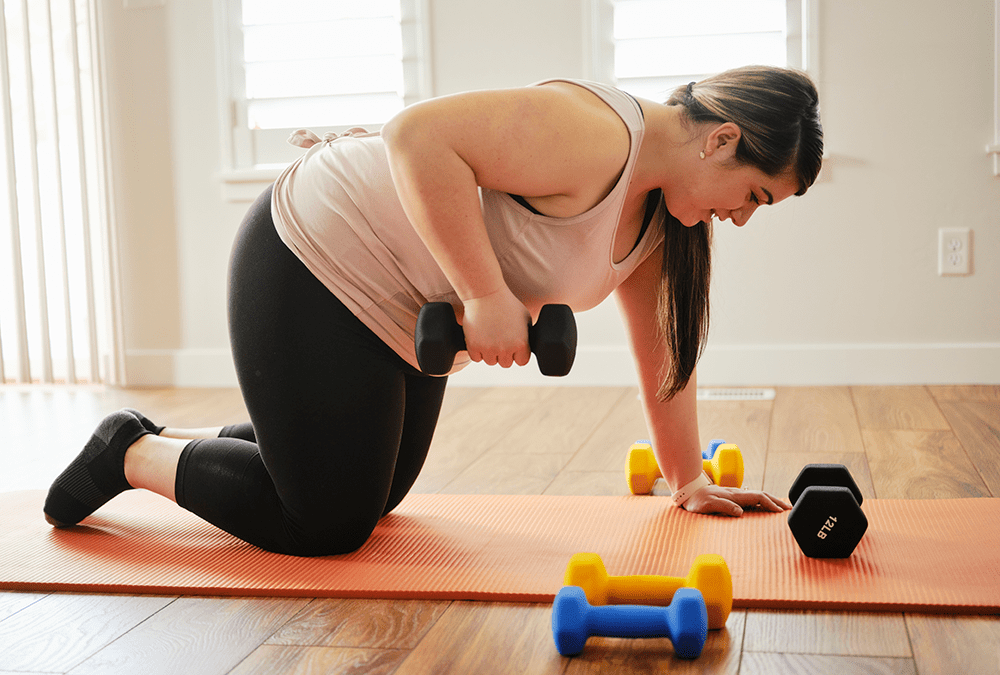Cardio fitness is more important than ever. According to a Harvard study, those with cardiovascular disease are more than twice as likely to contract severe forms of COVID-19. As we continue to battle the ongoing pandemic, there hasn’t been a more vital time to work on your cardiovascular health.
While high-impact aerobic exercise is an excellent preventive measure for cardiovascular issues, it’s not always possible — or enjoyable — for everyone. Fortunately, there are still plenty of ways to improve your cardio health without having to sweat over traditional cardio exercise, like running. Check out these five non-cardio activities for cardio health.
1. Try resistance training.
Resistance training means strengthening your muscles with weight, whether your own or with equipment. A 2019 study of 13,000 adults showed that those who committed to at least one hour of resistance training a week had a 40 to 70 percent lower risk of heart attack or stroke compared to those who didn’t. Resistance training includes things like squats, push ups and weight training. For seniors or those who cannot commit to high-intensity cardio or heavyweight exercises, simple resistance bands and lightweight dumbbells are still effective resistance training exercises to maintain positive cardio fitness.
2. Incorporate flexibility exercises.
In addition to improving elasticity and preventing muscle and joint pain, flexibility exercises are an excellent add-on to a non-aerobic cardio health routine. Research has shown that sticking to passive stretching exercises for 12 weeks can strengthen the cardiovascular system and significantly increase circulation.
At a minimum, incorporate some simple stretches into your overall routine, like a hamstring stretch or side stretch, to increase blood flow and prime your muscles for a workout. Yoga and Pilates are two more stationary forms of flexibility training that can benefit any fitness level.
3. Take a walk.
If you’re uncomfortable jogging or have difficulty running, don’t worry — slow down and just take a walk. Studies show that walking around 5 1/2 miles a week reduces the risk of cardiovascular events such as heart attacks by 31 percent. Consider purchasing a pedometer to better track your steps and establish weekly walking goals. With COVID-19 causing so many of us to be more sedentary, take the opportunity to get outside and explore new green spaces, from state parks to botanical gardens.
4. Go for a swim.
Working both the cardiovascular and respiratory systems, swimming trains your body to use oxygen more efficiently. This helps improve circulation and overall cardiovascular health. While high-intensity swimming is an effective way to improve cardio fitness, you don’t have to swim laps to get the same cardio benefits in the water.
Wading around in the water is a low-impact resistance exercise ideal for mature age groups and individuals suffering from muscle and joint pain. Try using lightweight ankle weights or a small paddleboard for added resistance. Or walk a few laps around the pool to get your system pumping.
5. Sit in a sauna.
If you need a break from traditional physical activity, saunas can offer similar cardiovascular benefits. Even when you’re sitting completely still, a sauna session can raise your heart rate to 120 to 150 beats per minute. Some studies found that sitting in a sauna may produce a physical response similar to moderate- or high-intensity physical exercise.
Note: Saunas are not for everyone. For example being dehydrated or drinking alcohol before or during sauna use can be dangerous. Also, women who are pregnant or individuals with specific medical conditions, such as low blood pressure or cardiovascular disease, should consult their doctor before visiting a sauna.
There’s always a way to improve your cardio fitness.
If you can’t or don’t want to commit to high-intensity cardio exercise, you can still maintain — and improve — cardiovascular health. From developing a lightweight resistance routine to walking around the park, remember these five effective and highly doable alternatives.

